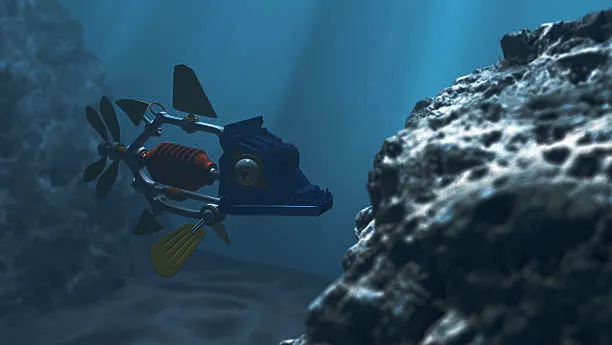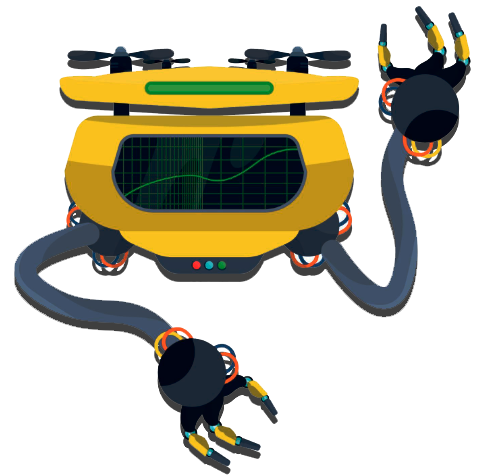WaterBotics: A Dive into STEM Education

In the rapidly evolving world of education, where the demand for innovative and effective STEM (Science, Technology, Engineering, and Mathematics) programs is at an all-time high, one curriculum stands out for its unique approach and comprehensive coverage: WaterBotics. This immersive, problem-based learning curriculum not only captivates the minds of middle and high school students but also equips them with essential 21st-century skills. Let’s plunge into the depths of WaterBotics and discover what makes it a treasure trove for educators and students alike.
What is WaterBotics?
WaterBotics is more than just a curriculum; it’s a gateway to understanding complex scientific and engineering principles through the engaging medium of water-based robotics. Designed for a diverse range of classroom settings and out-of-school programs, it offers a hands-on learning experience that challenges students to think critically and creatively.
The Pedagogical Approach
At its core, WaterBotics adopts a problem-based learning strategy that encourages students to solve real-world problems using scientific knowledge and engineering practices. This approach fosters an environment where learning is not just theoretical but practical and applicable in everyday life.
Who Benefits from WaterBotics?
The curriculum is ingeniously crafted to cater to a wide audience. Whether it’s gifted and talented students, those in general education, or students with special needs, WaterBotics has proven to be an effective tool in teaching complex concepts in an accessible manner.
The Essence of WaterBotics Curriculum
The curriculum is built on a modular, flexible design, allowing educators to tailor the program according to the specific needs and constraints of their learning environments. From intense one-week summer camps to semester-long projects, WaterBotics is adaptable and versatile.
Core Scientific Concepts
At the heart of WaterBotics are key scientific principles that form the foundation of the curriculum:
- Gears and Gear Ratios
- Buoyancy and Stability
- Inertia, Mass, Volume, Density
- Action/Reaction Forces and Momentum
Understanding these concepts is crucial for students as they navigate through the challenges posed by the curriculum.
Engineering Design Process
A critical component of WaterBotics is its emphasis on the engineering design process, including:
- Iterative Design: Brainstorm, Prototype, Test, Reflect, Redesign
- Systems Analysis and Interface Design
- Problem-solving and Gear Train Analysis
This process teaches students the value of iteration and reflection in solving complex engineering challenges.
Technology Integration in WaterBotics
Technology plays a pivotal role in the WaterBotics curriculum. Through hands-on activities, students learn to:
- Program using Icon-based Programming Systems
- Understand Flow Diagrams and Control Structures
- Utilize Loops, Switches, and Data Handling
- Operate Sensors & Motors and Troubleshoot Systems
This exposure to technology not only enhances their learning experience but also prepares them for future challenges in the tech-driven world.
Aligning with Educational Standards
WaterBotics aligns with the Next Generation Science Standards (NGSS) and other national standards, ensuring that the curriculum is not only relevant but also of high educational quality. This alignment guarantees that students are acquiring skills and knowledge that are recognized and valued across educational systems.
Implementation Flexibility
The flexibility in implementing WaterBotics cannot be overstated. Educators have the freedom to adapt the curriculum to fit their schedules, whether it’s for a short-term project or a comprehensive semester-long course. This adaptability makes WaterBotics an excellent choice for a wide range of educational settings.
The Impact of WaterBotics
The real magic of WaterBotics lies in its impact. Students engaged in the curriculum not only learn scientific and engineering principles but also develop critical life skills such as teamwork, communication, and problem-solving. These skills are invaluable, transcending the classroom and preparing students for success in any future career path.
Success Stories and Testimonials
The success of WaterBotics is evident in the stories of students and educators who have experienced the curriculum firsthand. Many report a significant increase in interest in STEM fields, along with improved problem-solving skills and a deeper understanding of scientific and engineering concepts.
Looking Ahead: The Future of WaterBotics
As we look to the future, the potential for WaterBotics to continue to inspire and educate the next generation of scientists, engineers, and technologists is boundless. With ongoing updates and improvements, the curriculum remains at the forefront of STEM education, ready to meet the challenges of a changing world.
Why WaterBotics Matters
In a world where STEM education is more critical than ever, WaterBotics stands out as a beacon of innovation and effectiveness. By blending scientific principles with real-world problem-solving, it not only educates but also inspires students to explore, discover, and create. Whether you’re an educator looking to invigorate your curriculum or a student eager to dive into the fascinating world of robotics and engineering, WaterBotics offers a journey worth taking.
WaterBotics is not just about learning; it’s about experiencing science, technology, and engineering in a way that is engaging, challenging, and, most importantly, fun. So, let’s dive in and explore the endless possibilities that WaterBotics brings to STEM education.
